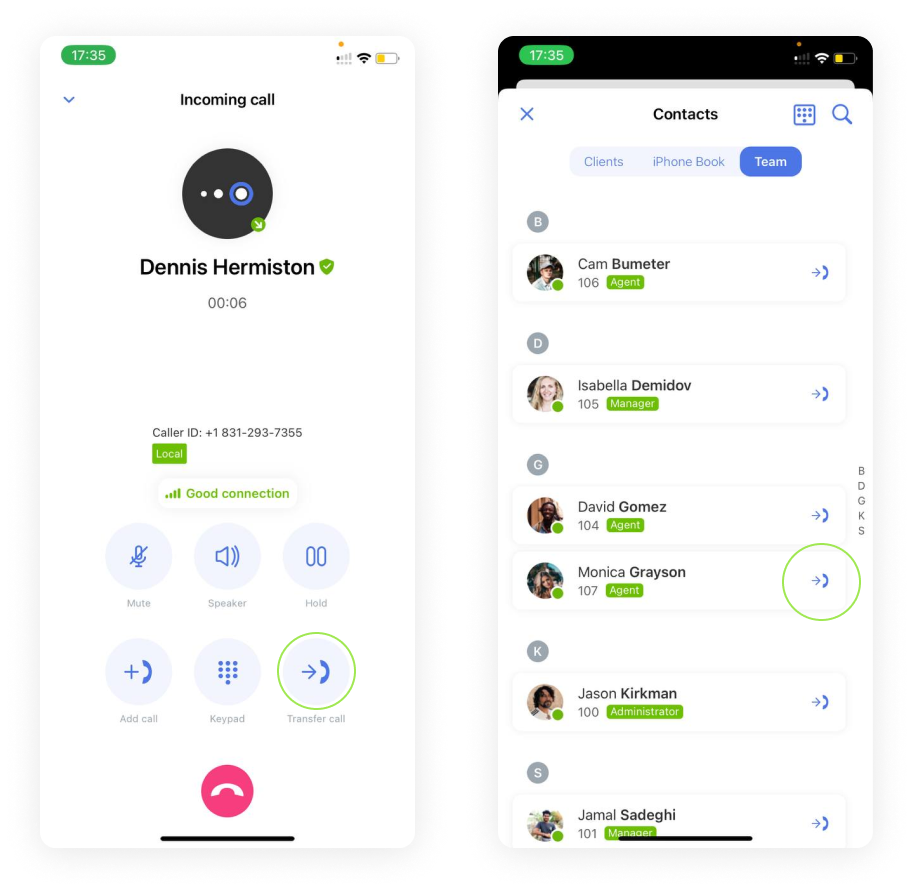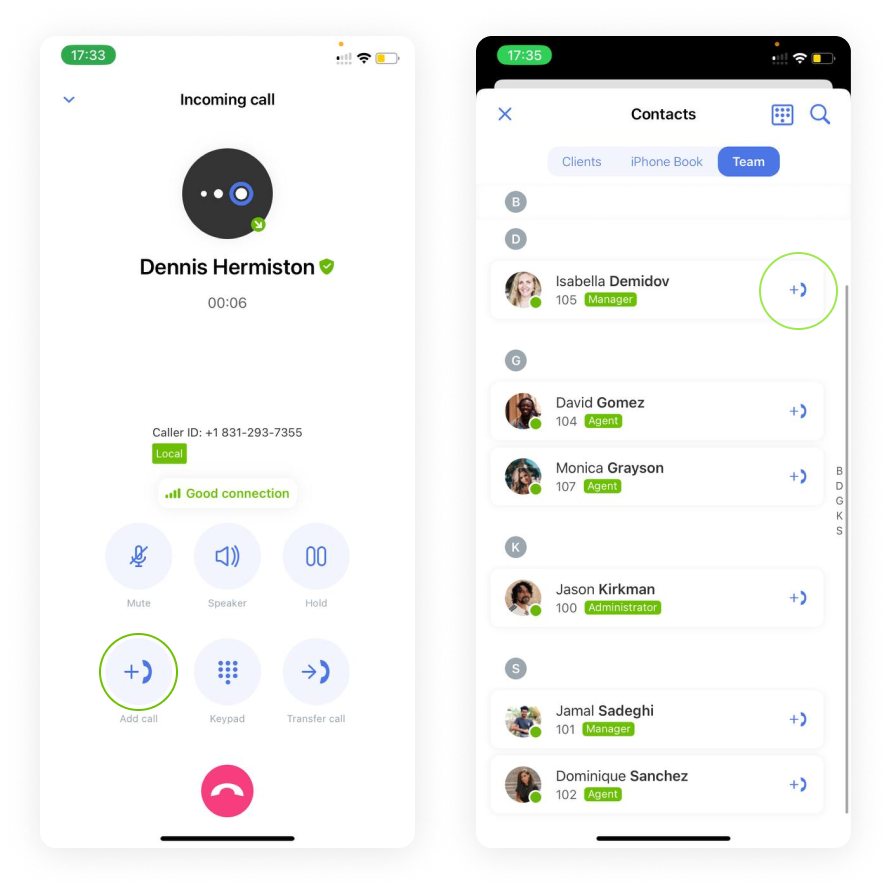What is Call Transfer?
Call transfer is a vital function in call centers, enabling the redirection of incoming calls to the right agents, departments, or external numbers. This feature plays a crucial role in making sure calls are attended to by the person best equipped to handle them, improving response quality and resolution.
Types of Call Transfers
Warm Transfer
- This means that the transferring agent speaks with the recipient before the transfer. Here is how it goes:
- Agent A picks up the phone and has a conversation with the client, finding out the reason for the call.
- The agent A explains to the client that they will get transferred to a different department or agent B for further assistance.
- Agent A places the client on hold.
- Agent A informs the recipient operator, agent B, about the caller’s query, preparing them for the conversation and ensuring an informed transfer.
Cold Transfer
Here, the call is sent directly to Agent B without prior discussion. This method is useful for quick call redirection when immediate action is required.
Advantages of Call Transfers for Business
- Escalating an issue: Sometimes a caller needs to speak with someone more experienced or a supervisor. In these cases, you can transfer calls to colleagues who have the right level of expertise or authority.
- Routing to the correct department: If a customer ends up connecting with the wrong department initially, you can quickly transfer them to the correct one, ensuring they get the help they need.
- Connecting with specialists: When a caller requires specialized knowledge or assistance, transferring them to in-house experts can provide the specific help they need.
- Handling high call volumes: In peak times, managing the flow of incoming calls is crucial. You can redistribute calls to teams or agents who are available, balancing the workload.
- Reaching out to external partners or collaborators: Sometimes, a caller’s needs extend beyond your organization. With Omnivoice, you can connect them to third-party associates, such as delivery services or external support teams.
- Connecting to remote workers: In today’s flexible working environments, you might need to transfer calls to team members who are working remotely. Omnivoice allows you to redirect calls irrespective of geographical location.
- Bypassing automated menus: For a more personal touch or when a caller needs immediate assistance, you can use the call transfer feature to connect them directly with a live representative, avoiding automated response systems.

How to Conduct a Cold Transfer with Omnivoice

To do a cold transfer in Omnivoice, press the ‘Call Transfer’ button during a call and choose the desired destination. The call is then immediately transferred to the selected party.
How to Initiate a Warm Transfer in Omnivoice?

Achieving a warm transfer using Omnivoice is straightforward:
- Place the client on hold.
- Add a consultation call to the colleague.
- If you desire a warm transfer, set up a conference call, so everyone can communicate.
Transferring a Call to an External Number with Omnivoice

Sometimes, calls need to be transferred to an external number outside your organization. With Omnivoice, transferring to an external number always results in a cold transfer. Here’s how to do it:
- Press the ‘Call Transfer’ button during the call.
- Use the dial pad to input the external number you intend to transfer the call to.
Importance of Call Transfer in Business Communication
Using call transfers is essential for well-managed and professional communication. It not only makes handling calls more organized but also improves the experience for customers. Omnivoice’s call transfer feature is designed to make your business communication more effective and streamlined.
FAST • SECURE • RELIABLE
business communications

